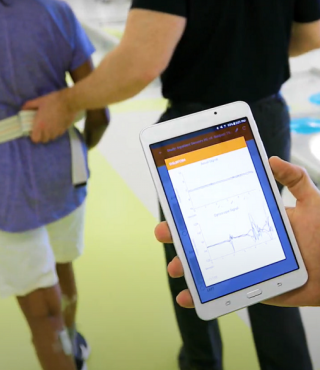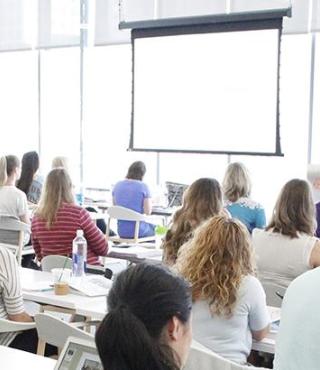Purpose
The Purdue Pegboard aids in the selection and rehabilitation of employees for various types of manual labor by measuring 2 types of dexterity:
- Gross movements of the fingers, hands and arms.
- Fine fingertip dexterity necessary in assembly tasks.
Acronym
PPBT
Area of Assessment
Coordination
Dexterity
Assessment Type
Performance Measure
Cost
Not Free
Actual Cost
$150.00
Cost Description
$110-150
Diagnosis/Conditions
- Parkinson's Disease & Neurologic Rehabilitation
- The Purdue Pegboard Test is a rectangular board with 2 sets of 25 holes running vertically and 4 concave cups at the top. Small metal pegs are placed in the cup on the side being tested, with subjects asked to remove the pegs and place them vertically in the holes as rapidly as possible. The number of pegs placed in 30 seconds is scored.
- The original application for the test was for testing the dexterity of industrial workers. It has since been used for testing of dexterity testing within various populations in the clinical setting, including children and adolescents.
- The test takes about 30 seconds per activity for a total of 5-10 minutes including instruction. The test administrator compiles 5 separate scores from the complete test procedure, one for each battery:
1) Right Hand (30 seconds)
2) Left Hand (30 seconds)
3) Both Hands (30 seconds)
4) Right+Left+Both Hands (This is not an actual test, but a mathematical sum calculation)
5) Assembly (60 seconds)
(Lafayette Instrument Company User’s Manual, 2002)
- Purdue Pegboard Test
- Instruction Manual
- Test Board
- Pins, Collars, Washers
- Score Sheets
- At least one testing table approximately 30 inches tall. The subject must be seated throughout the administration of the test.
- Stopwatch
Required Training
Reading an Article/Manual
Instrument Reviewers
References from the Parkinson’s disease population by Jeffrey Hoder, PT, DPT, NCS and the PD EDGE Task Force of the Neurology section of the APTA
Body Part
Upper Extremity
ICF Domain
Body Function
Measurement Domain
Motor
Professional Association Recommendation
Recommendations for use of the instrument from the Neurology Section of the American Physical Therapy Association’s Multiple Sclerosis Taskforce (MSEDGE), Parkinson’s Taskforce (PD EDGE), Spinal Cord Injury Taskforce (PD EDGE), Stroke Taskforce (StrokEDGE), Traumatic Brain Injury Taskforce (TBI EDGE), and Vestibular Taskforce (Vestibular EDGE) are listed below. These recommendations were developed by a panel of research and clinical experts using a modified Delphi process.
For detailed information about how recommendations were made, please visit: http://www.neuropt.org/go/healthcare-professionals/neurology-section-outcome-measures-recommendations
|
Abbreviations:
|
|
|
HR
|
Highly Recommend
|
|
R
|
Recommend
|
|
LS / UR
|
Reasonable to use, but limited study in target group / Unable to Recommend
|
|
NR
|
Not Recommended
|
Recommendations Based on Parkinson Disease Hoehn and Yahr stage:
|
|
I
|
II
|
III
|
IV
|
V
|
|
PD EDGE
|
LS/UR
|
R
|
R
|
R
|
LS/UR
|
Recommendations for entry-level physical therapy education and use in research:
|
|
Students should learn to administer this tool? (Y/N)
|
Students should be exposed to tool? (Y/N)
|
Appropriate for use in intervention research studies? (Y/N)
|
Is additional research warranted for this tool (Y/N)
|
|
PD EDGE
|
No
|
No
|
Yes
|
Not reported
|
Considerations
Parkinson’s disease: Strong psychometrics. It is valid and reliable. It has been used in medication trials (Tan, 2003), post neurosurgery (Pal, 2000) and to measure dexterity during off times in PD (Brown, 1998). It was used to test dexterity during dual task performance (Proud, 2010). Correlated strongly to UPDRS total and motor (Proud, 2010). Dexterity decreases with increased severity of disease. Pegboard scores best correlated with bradykinesia and loss of dopamine per PET scan (Vingerhoets, 1997).
Do you see an error or have a suggestion for this instrument summary? Please e-mail us!


